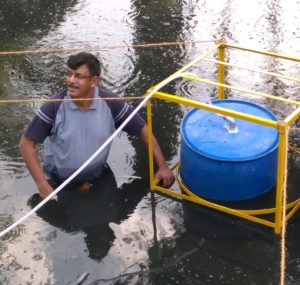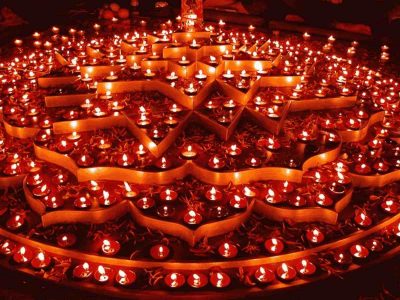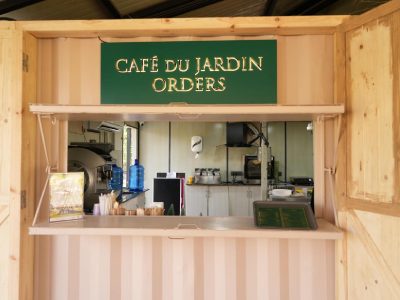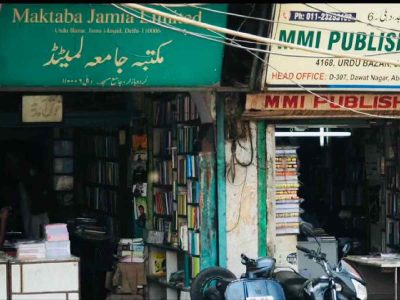Hemant Bhardwaj by his indefatigable energy and innovative initiatives has transformed his locality in Ghaziabad
Hemant Bhardwaj, a resident of Ghaziabad, blessed with indefatigable energy turned 60 a couple of months ago. He has transformed the area he lives in by making cooking gas out of a filthy drain that passes nearby his house in Brij Vihar.
Not just that he has single handedly painted the wall along the nallah—the drain—and now plans to generate electricity out of the sewage water that follows down the drain. There has been little help from the authorities and has only cemented his resolve to be a change agent, an excellent example of how individuals can transform their surroundings. He puts it simply, “if there’s a will there’s a way.”
Hemant is not an engineer, and he clarified it at the very beginning that he doesn’t belong to any political party or profess an ideology. He’s worked in the private sector and is an expert in money vending or ATM machines, and his expertise is recognized not just in India, but in also China and other places where ATM machines are manufactured. He has a knack of getting things going by sheer application of mind after conducting thorough research. He epitomizes Jugaad—the Indian way of finding solutions to problems, and in the process, turning adversity into opportunity.
He purchased the GDA flat a few years ago, shifted with his family—wife, Jyotsna, daughter Ananya and son Advitye. And six street dogs he takes care of. His mother didn’t like the house, even called it a waste of money, as there is a filthy nallah nearby. He was motivated to change the surroundings, not for his own good, but for the community at large. He would sit on the balcony observing the nallah. He noticed effervescence on the surface of chemically contaminated water—like an open sewer. These bubbles were formed because of the gas being emitted.
Hemant did due diligence and research, even carried out experiments. Came to the conclusion that one of the gases emitted is methane that can be used for cooking, as a source of energy. And so placed inverted plastic drums inside the water, and used an apparatus to absorb carbon dioxide and hydrogen sulfide gases. “Since methane is lighter than air, it would topple the drum and gas would escape. So he installed an iron frame to hold the drum and the gas so collected is attached to a burner, which is used for cooking.”

The flame is clear and therefore not visible during the day but only at night. “It’s a pure blue flame,” describes Hemant. He uses the gas to burn a flame round the clock—on the lines of Amar Jawan Jyoti at India Gate—and calls it ‘Atal Jyoti’.
Not only that, he approached the local municipal authorities to be able to supply cooking gas in the form to the nearby slum, he got no support. Though, the government and municipal functionaries are aware of his innovation and they know in their hearts that it has a great potential to use wastewater towards supplying power.
Not just the gas, Hemant also carried out experiments to clean the water by filtration by absorbing arsenic in the water of the nallah. He carried out experiments using samples in glass bottles and filtering wastewater through layers of carefully selected crushed seeds. The arsenic content would settle at the base of the bottle and could easily be separated, leaving the water clean. He even got the water tested, and the results were very encouraging, after 24 hours of filtration arsenic levels were down from 4000 TDS to 300. Generally, the TDS levels of 50 to 150 are considered as suitable for drinking.
Also, a four-foot wall was constructed along the nallah by the local authorities. Hemant swung into action. He put a layer of plaster of Paris to create a surface conducive for drawings. He spent many weeks painting murals on the wall. He paints government schemes like Make in India initiatives, a portrait of Prime Minister Narendra Modi and Chief Minister Yogi Adityanath, even episodes from Ramayana and Mahabharat. “I don’t paint these because I’m a BJP member, but because I know if you paint these things no one will dare soil the wall,” he explains the pragmatism that drives the selection of pictures he paints.

“I would have painted different images had Samajwadi Party been in power,” he doesn’t mince words. From being an open sewage nallah, the area has transformed into an artistic part of the locality where people come for morning walks. The next project is power generation, and he’s ready with the prototype and will soon try it out.
But these initiatives have created a bit of political unrest in his locality, local representatives think of him as a threat, as he might have political ambitions, and his work speaks volumes about his capability as a change agent and a reformer. He is a popular man in the locality. They at best want to keep Hemant at bay, while he is always motivated to carry out his personal projects for the benefit of people at large.
Hemant gives a more personal reason for this activism, “I cannot sit idle at home. This life is meant to do something.” His daughter is an English teacher based in Spain, and she is soon to return. Currently, he’s whitewashing his own house and varnishing an old sofa. As they say: self help is the best help.
All said and done, it has to be said that his innovations have the potential to deal effectively with grave civic problems of pollution.





